Description and characteristics of the Cardinal strawberry variety, planting and care
It's hard to find someone who doesn't like strawberries. Therefore, each owner grows this fragrant berry on his site, familiar to everyone from childhood. Strawberries contain a whole range of vitamins and minerals, including folic acid, which is essential for the normal functioning of the immune system, heart and blood vessels. There are many varieties of strawberries, but you should pay attention to one of them under the sonorous name Cardinal.
General information about the variety
The Cardinal strawberry variety was bred by American breeders. It has large oblong berries that can weigh up to 80 grams. Its bushes are large, but not dense, with a characteristic leaf characteristic. Above, the leaves are dark green, below with a bluish tint. Each leaf is folded like a boat.
The first ripe fruits appear in early July. Berries that ripen later are much larger than the first ones. Sometimes one bush gives up to 1 kg of harvest. The height of the bushes is up to 40-45 cm.
Positive and negative sides
Like other varieties, this species has its pros and cons. The disadvantages of the Cardinal variety are much less than the advantages, but they are still there.
The pluses include the following:
- Dense structure, due to which the berries are stored for a long time and tolerate transportation well.
- Pleasant sweet and sour taste.
- Produces a high yield.
- It bears fruit twice a season.
- It is a large-fruited variety.
- Resistant to many diseases, including gray mold.

The cons are:
- Reproduction of the variety is slower than that of other types of strawberries, as the mustaches that bloom and bear fruit do not take root.
- Powdery mildew affections.
Rules for planting strawberries Cardinal
Strawberry Cardinal is a highly productive variety and requires certain conditions when planting. You should know what kind of soil is suitable for her, when to land and how exactly to do it.
Soil requirements
The soil for planting bushes should be slightly acidic with a pH of 5-6. Sandy loam and loamy soil is suitable. It must contain nutrients and humus.
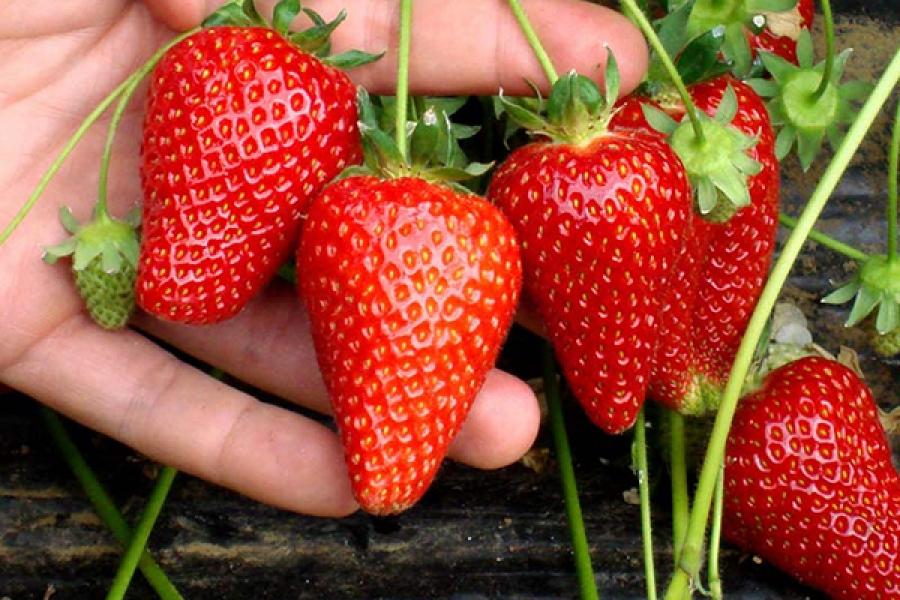
Important! You can not plant the bushes in cold clay soil, the harvest will be minimal, if at all.
If you plant strawberries in sandy soil, the harvest will be fairly small berries. Since sand cannot retain moisture in itself for a long time, the bushes will critically miss it.
Boarding time
It is best to plant strawberry bushes outdoors in early spring or between late August and mid-September. In this way, plants will be able to adapt most quickly and take root firmly.
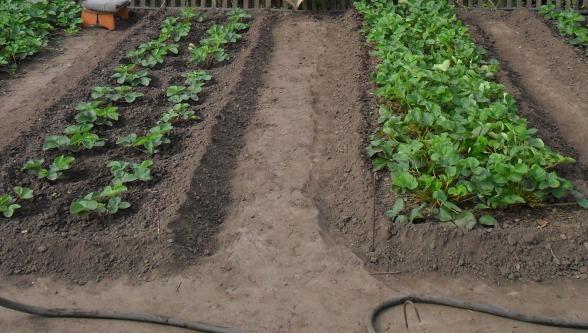
Planting process
There are two types of planting bushes in the soil:
- Single row. The bushes are planted with a distance of 60-70 cm between the ribbons. And the plants in a row should be at a distance of about 120 cm. With this method of planting, many mustaches with rosettes grow in the first year.
- Double row. The space between the ribbons should be 70 cm. The line spacing is 30 cm. There should be 30 cm between the bushes in one row. This type of planting is more suitable for the summer period.
Also, sometimes gardeners use a compacted planting method in order to remove all plants damaged by pests or disease in the spring.
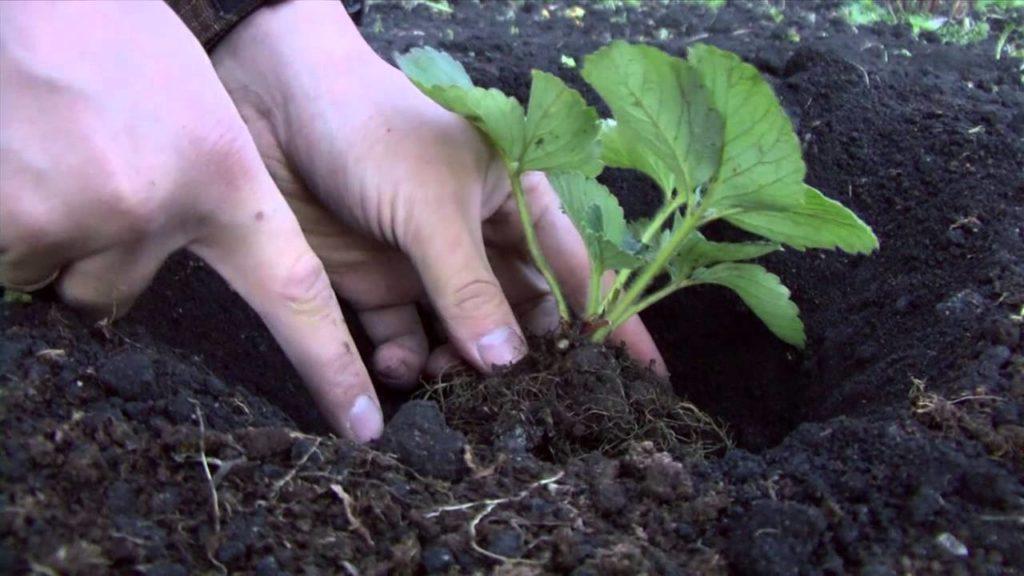
How to care for strawberries
This strawberry variety gives a good harvest. The main thing is to adhere to simple rules for caring for him. It should be remembered that the harvest depends on this.
How to water and feed properly
Watering is the most important thing in caring for Cardinal strawberry bushes. It should be abundant and daily. It is important that the earth never dries up. The water for this should not be too cold, its minimum temperature is 18 degrees.
It is better to do this manipulation in the morning. While the bushes are not yet blooming, watering should be in the form of rain. Thus, dust is washed off the plants, and they develop more actively. When the strawberries bloom and bear fruit, only the soil should be watered.
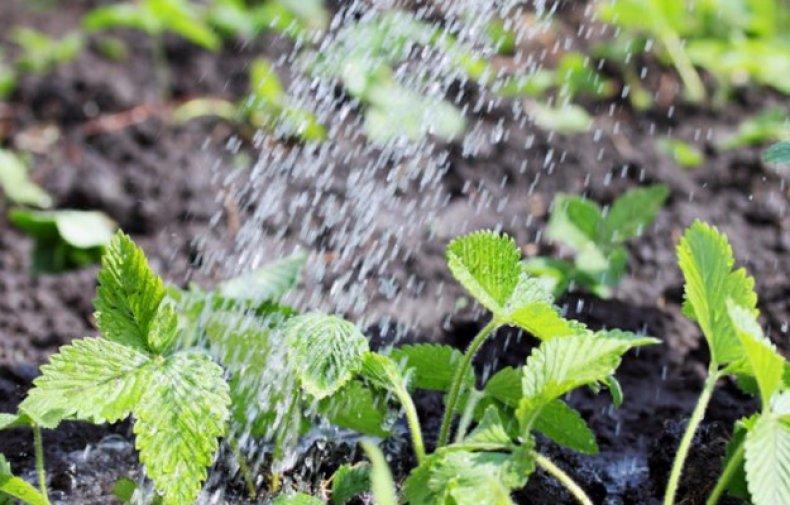
They are fed three times a season using organic and mineral fertilizers. The first time in the spring, the second - during the period of fruit formation and the third - in preparation for winter.
Loosening and weeding
In early May, you should start weeding and loosening the soil. You can also huddle bushes, this will provoke the growth of new root processes. At the end of May, you need to repeat weeding and loosening of the soil around the plants.
Mulching
Mulching is an important procedure. It allows you to retain moisture in the soil for a longer time, creates a heating of the root system and inhibits the growth of weeds. The procedure is performed twice a year. First time in spring, when the first ovaries appear on strawberry bushes. Second time in the fall, after harvest.

Any organic material can be used as mulch, for example: straw, hay, pine needles, bark or sawdust, cardboard or black opaque film with small holes is also suitable.
Important! When using organic mulching materials, make sure they are completely dry, otherwise rotting can begin.
Diseases and pests
Cardinal strawberries are quite resistant to various diseases and pests, but still they are susceptible to some diseases. Namely, a fungal infection called anthracnose. To avoid disease, you need to soak the bushes in fungicide for 30 minutes before planting. Do not overmoisten the soil and feed the plants in time.
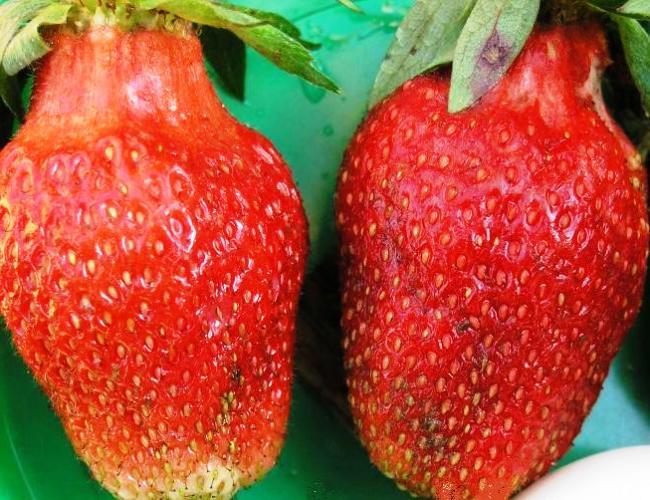
As mentioned above, the Cardinal variety is prone to frequent powdery mildew disease, therefore, during weeding, you should inspect the bushes and regularly take preventive measures by spraying the plants with a fungicide, since powdery mildew is also a fungal disease.
Of the pests for strawberries, the nematode is a threat - this is a worm that damages the entire ground part of the bush.
Prevention is the seating of marigolds on the site. Their smell scares off the parasite.
Strawberry propagation
Cardinal is propagated most often by antennae. To do this, choose a mustache of the second order in the outlet. They are planted in separate pots or in the aisle, in April.
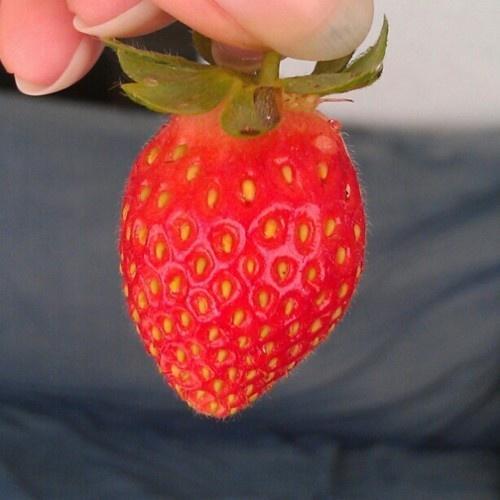
When the seedlings have a sufficiently strong root, they are separated from the mother bush and transplanted to a permanent place. No more than two whiskers are taken from one bush, the rest are cut off, as they draw nutrients from the plant.
A variant of reproduction and separation of bushes is possible. To do this, a large plant is divided into several shoots and planted. Planting with seeds is also sometimes used. The top layer with seeds is cut from the berry and dried. Then they are separated from the pulp and sown in the ground. This method is more suitable for breeders than gardeners.
Collection and storage rules
Harvesting begins in June. During this period, strawberries need to be watered in the evening, after picking the berries. During the collection, peduncles are cut off on uterine bushes and tendrils on all plants.

It is correct to pick the berries together with the “cap” and part of the leg. Strawberries should be collected immediately in the container in which they will be stored. The container must be well ventilated. Spread the berries in a maximum of 3 layers. So the harvest will last longer without changing the structure.
You cannot wash the berries, otherwise the juice will drain from them, and they will lose their taste. The crop can be stored in a cool place for up to 5-7 days. At the same time, all the characteristics of the berries are preserved.
From the description of this variety, it becomes clear that it is quite simple to grow it. It is unpretentious and frost-resistant. If you follow the instructions, he will bring a lot of juicy and aromatic berries as a reward for his efforts.
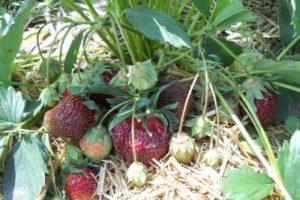
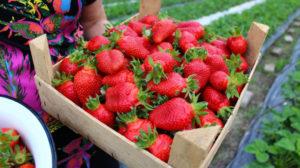







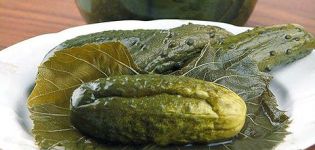
I plant this strawberry in one row. It seems to me that with such a planting, the yield of the bushes is slightly higher. The fruits grow quite large, very juicy. One of my favorite varieties.